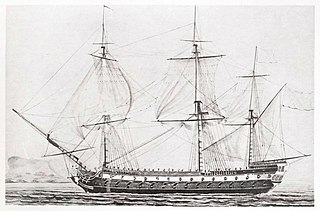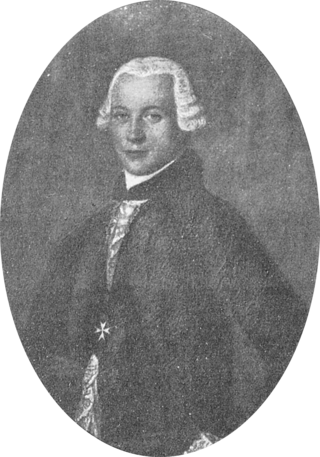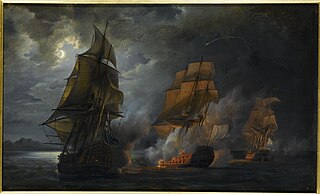
Annibal was a 74-gun ship of the line of the French Navy, lead ship of her class. She was designed by Jacques-Noël Sané, and was one of the earliest of his works. She was built at Brest in 1778.

The Fantasque was a Lion-class 64-gun ship of the line of the French Navy. She is famous for being captained by the French commander Pierre-André de Suffren during the American Revolutionary War.

Triomphant was an 80-gun ship of the line of the French Navy.
Sceptre was a 74-gun ship of the line of the French Navy. Built under the Ancien Régime, she took part in the naval operations in the American Revolutionary War. At the Revolution, she took part in the main actions of the French Revolutionary Wars, notably the so-called Glorious First of June and in Bruix' expedition of 1799. Showing her age by the rise of the First French Empire, she was hulked and eventually broken up.
The Zélé was a 74-gun ship of the line of the French Royal Navy. She was funded by a don des vaisseaux donation from the Régisseur général des finances.

Résolue was an Iphigénie-class 32-gun frigate of the French Navy. The British captured her twice, once in November 1791 during peacetime, and again in 1798. The Royal Navy hulked her in 1799 and she was broken up in 1811.
The Bourgogne was a 74-gun ship of the line of the French Navy. She was funded by a don des vaisseaux donation from the Estates of Bourgogne. She was commissioned in 1772, and served in the squadron of the Mediterranean, with a refit in 1775, and another in 1778.
The Citoyen was a 74-gun ship of the line of the French Navy, lead ship of her class to a design by Joseph-Louis Ollivier. She was funded by a don des vaisseaux donation from the Bankers and General Treasurers of the Army.

Experiment was a 50-gun ship of the line of the British Royal Navy. Captured by Sagittaire during the War of American Independence, she was recommissioned in the French Navy, where she served into the 1800s.

Éveillé was an Artésien-class 64-gun ship of the line of the French Navy, launched in 1772.
Armand Le Gardeur de Tilly was a French Navy officer. He served in the War of American Independence.

Pierre de Roquefeuil-Montpeyroux was a French Navy officer. He served during the War of American Independence.
Louis Augustin de Monteclerc was a French Navy officer. He served in the War of American Independence.

Charles-René de Gras-Préville was a French Navy officer. He served in the War of American Independence, earning membership in the Society of the Cincinnati.
Indien was a 64-gun ship of the line of the French Navy, lead ship of her class. Originally built for the French East India Company, she was purchased by the Navy and saw service during the War of American Independence
Actionnaire was a 64-gun ship of the line of the French Navy. Originally built for the French East India Company, she was purchased by the Navy and saw service during the War of American Independence

Triton was a 64-gun ship of the line of the French Navy designed by François Coulomb the Younger. She took part in the Seven Years' War and in the War of American Independence.
Zodiaque was a 74-gun Diadème-class ship of the line of the French Navy.

Armand-Claude Poute de Nieuil was a French Navy officer. He served during the War of American Independence.
Victor-Louis Desmichels de Champorcin was a French Navy officer. He served in the War of American Independence.










